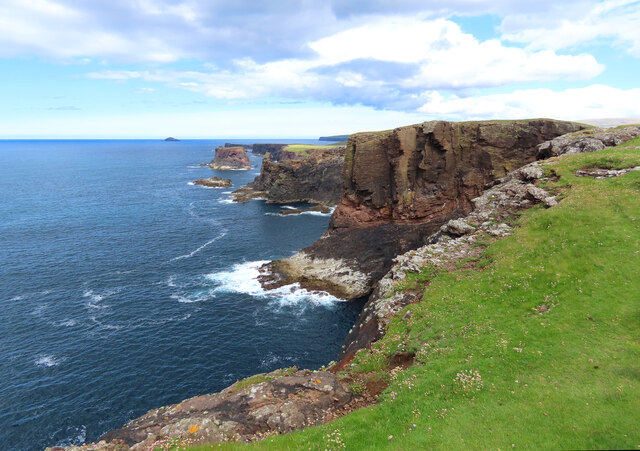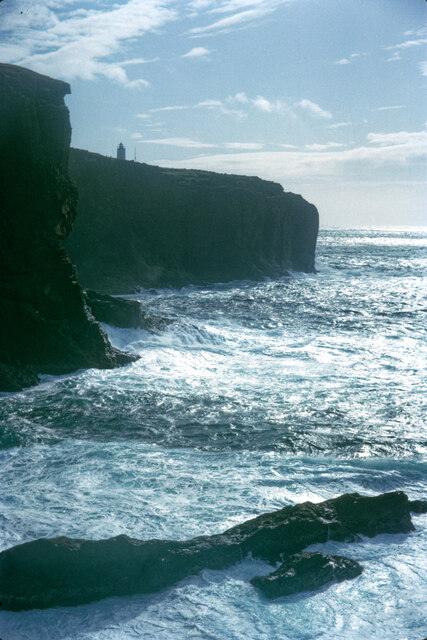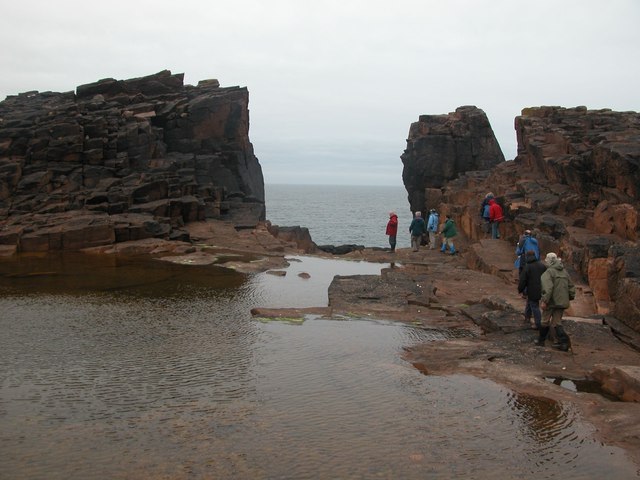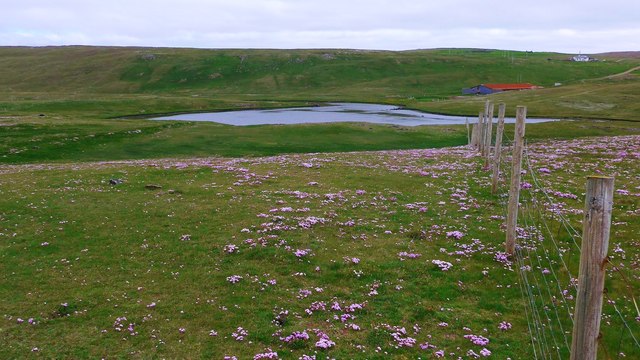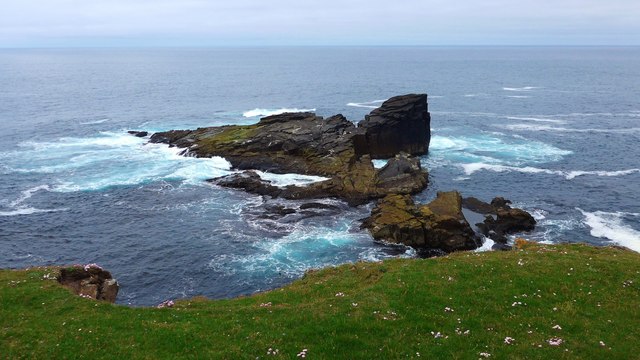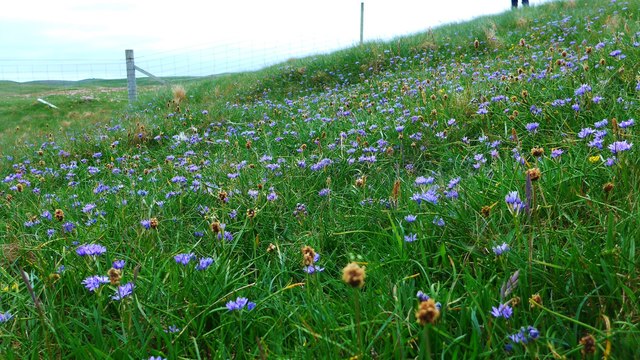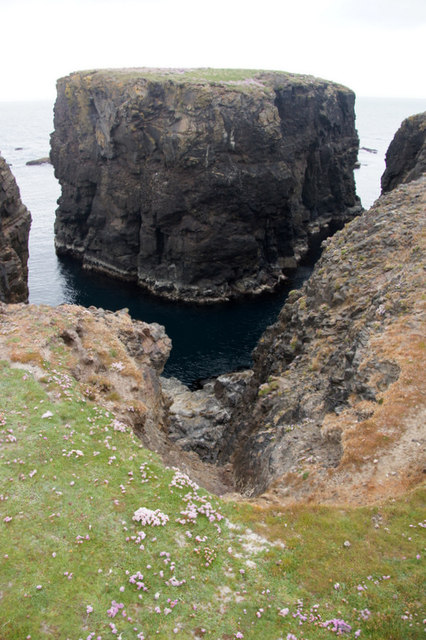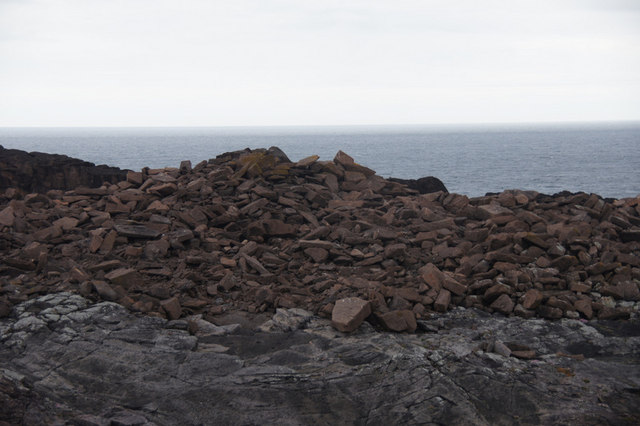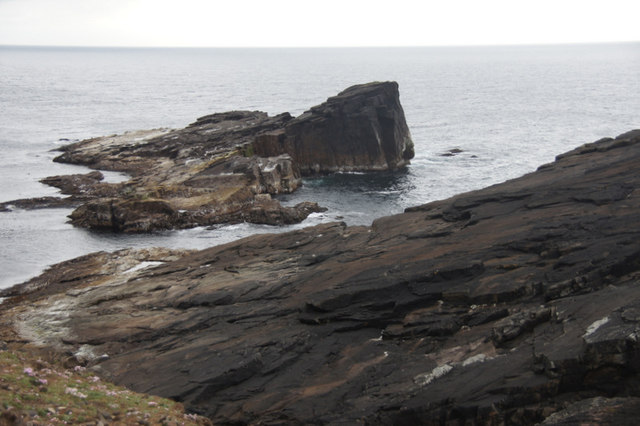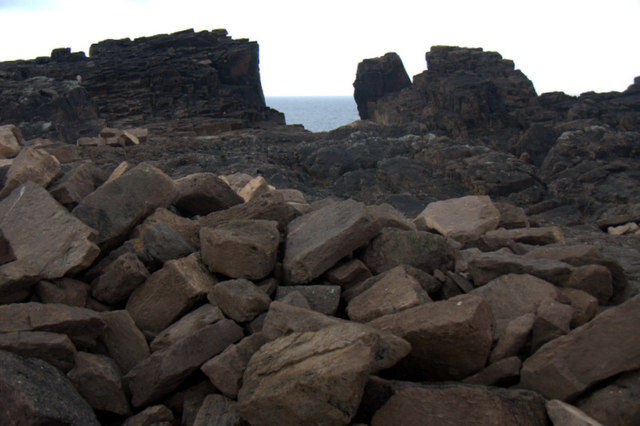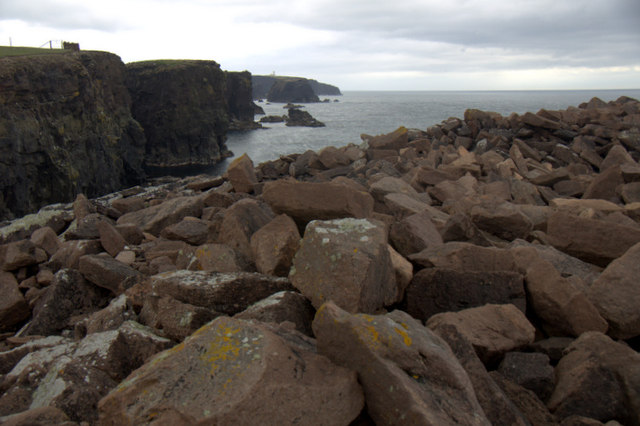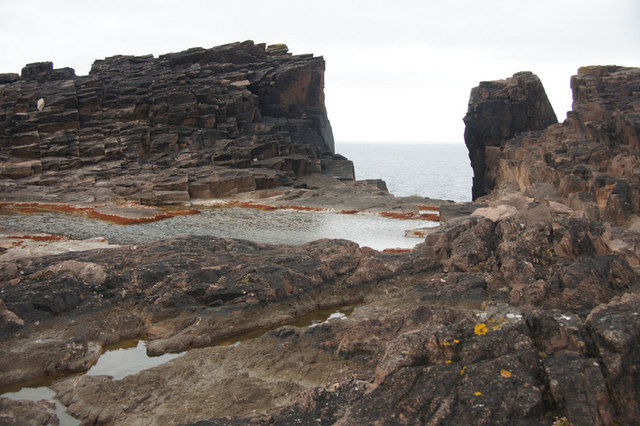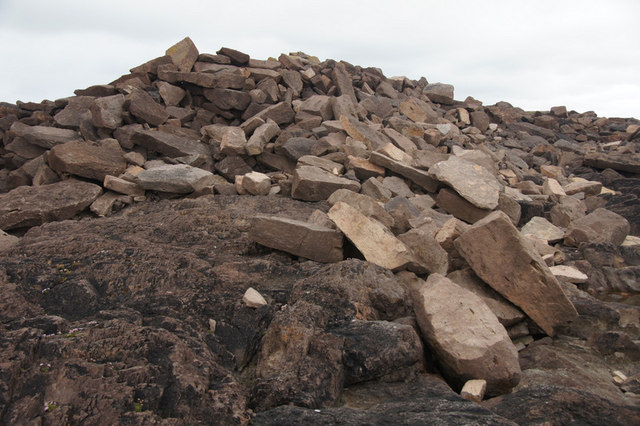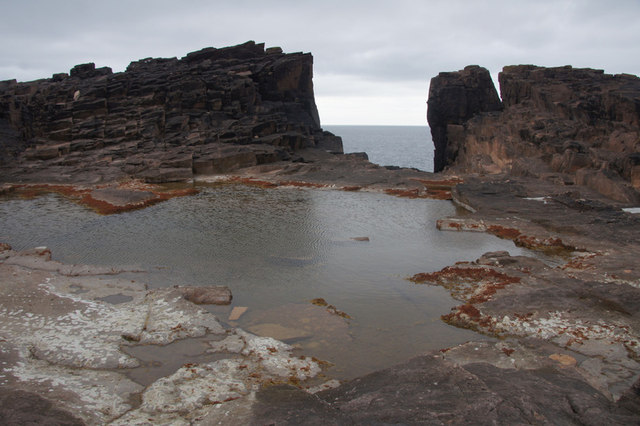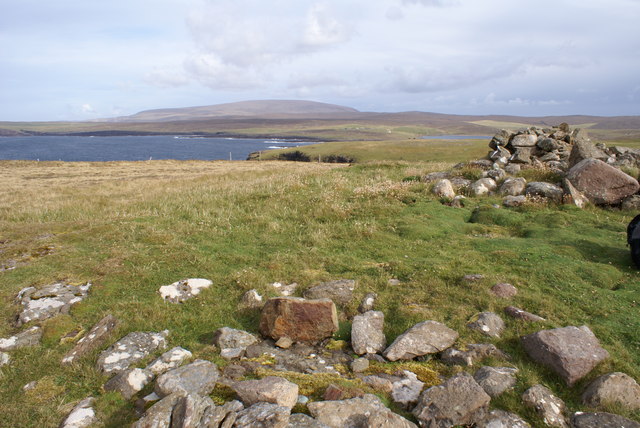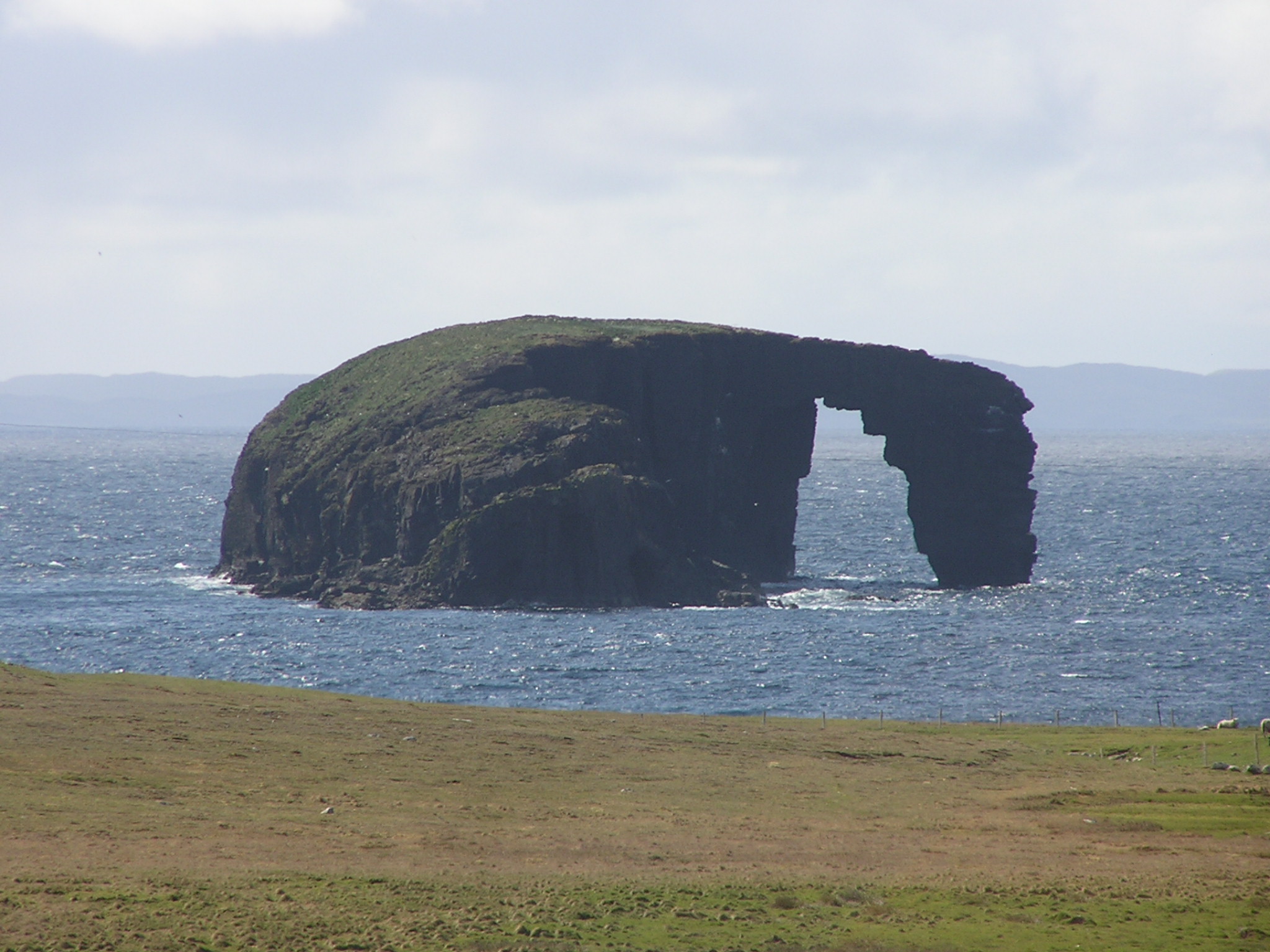Calder's Geo
Coastal Feature, Headland, Point in Shetland
Scotland
Calder's Geo

Calder's Geo is a prominent coastal feature located in the Shetland Islands, an archipelago in Scotland. It is classified as a headland, also commonly referred to as a point due to its protrusion into the sea. The geo is positioned along the rugged coastline of the Shetland Mainland, in close proximity to the village of Sandness.
This geologically significant headland is characterized by its steep cliffs that rise dramatically from the sea, reaching heights of up to 100 meters (330 feet) in places. The cliffs are composed of sedimentary rocks, displaying distinct layers that provide valuable insights into the region's geological history.
Calder's Geo is a haven for a diverse range of seabird species, including puffins, gannets, and guillemots. These birds nest on the ledges and crevices of the cliffs, taking advantage of the favorable conditions for breeding and feeding. The area is also known for its rich marine life, with seals often spotted basking on nearby rocks and occasional sightings of dolphins and whales.
Access to Calder's Geo is possible both by land and sea. Visitors can enjoy panoramic views of the surrounding coastline and the North Atlantic Ocean from the top of the cliffs. The headland offers a perfect vantage point for observing the dramatic waves crashing against the rocks and the interplay between land and sea.
Calder's Geo, with its outstanding natural features and abundant wildlife, is not only a remarkable coastal landmark but also a popular destination for nature enthusiasts and photographers seeking an immersive experience in the stunning Shetland Islands.
If you have any feedback on the listing, please let us know in the comments section below.
Calder's Geo Images
Images are sourced within 2km of 60.490832/-1.6216142 or Grid Reference HU2078. Thanks to Geograph Open Source API. All images are credited.
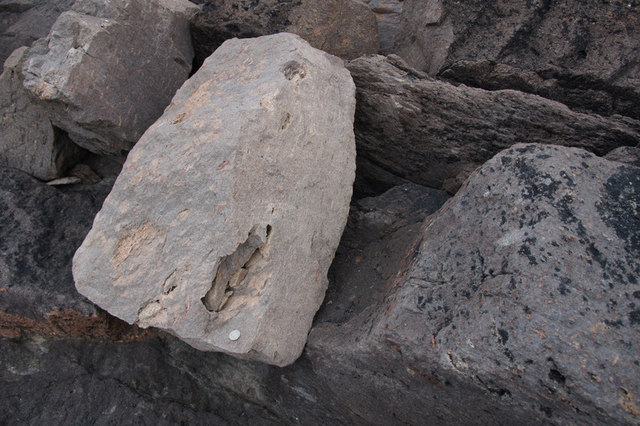
Calder's Geo is located at Grid Ref: HU2078 (Lat: 60.490832, Lng: -1.6216142)
Unitary Authority: Shetland Islands
Police Authority: Highlands and Islands
What 3 Words
///guilty.exhaling.treating. Near Brae, Shetland Islands
Related Wikis
Calder's Geo
Calders Geo is an inlet in the western cliffs of Esha Ness in Northmavine on the Mainland, Shetland, Scotland. A cave on the north side of the geo has...
Esha Ness
Esha Ness, also spelled Eshaness, is a peninsula on the west coast of Northmavine, on the island of Mainland, Shetland, Scotland. Esha Ness Lighthouse...
Tangwick Haa
Tangwick Haa is an historic house and museum in Esha Ness, Northmavine, Shetland. The building has two stories in a rectangular layout and along with the...
Dore Holm
The Dore Holm is a small uninhabited islet off the south coast of Esha Ness, located in the north-west of Mainland, Shetland, Scotland. Its natural arch...
Nearby Amenities
Located within 500m of 60.490832,-1.6216142Have you been to Calder's Geo?
Leave your review of Calder's Geo below (or comments, questions and feedback).

